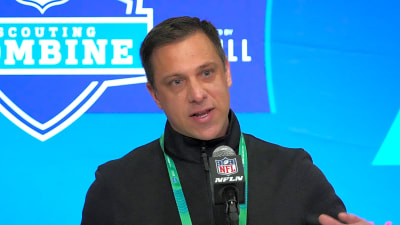Powder aims to feature only the best products and services. If you buy something via one of our links, we may earn a commission.
There’s no clear answer as to where on the planet “freeride” skiing as we know it today actually got started, but without sounding too poetic, I’ll say it clearly got started in the hearts of skiers looking to have a good time. On snow, there’s little that’s more fun than chasing your friends through whatever terrain you feel like, jumping off things, spraying each other with snow, and skiing with reckless abandon. Whether you’re somewhere deep in the backcountry riding proper big mountains, or simply ripping around your local resort, that simple pleasure is all the same.
From a technical standpoint, though, the type of skis you might want for freeride skiing really depends on where you’re riding, what type of snow you’re dealing with, and whether you prefer a more directional ski or a looser, surfier, twin-tip construction. How do we define a “freeride” ski? These fall somewhere on the spectrum between all-mountain and true powder skis, with waist widths typically between 105mm and 115mm, stiffer flexes, and slightly heavier weights, all with the intention of skiing aggressively through technical terrain and variable snow. These can handle everything from firm hardpack, a foot of blower, chalky bumps, and everything in between.
Just like what we’ve said about powder skis and all-mountain skis, when it comes to today’s skis, we’re living in a golden era. There are so many options to choose from out there, most of which are truly excellent–it just depends on what you, the skier, might best benefit from. I’m of the firm opinion that skis should feel like an extension of yourself, meaning you want to feel as comfortable as possible on them, allowing them to enhance your skiing experience, not detract from it.
What does that mean? If you’re looking to purchase a new pair of freeride skis this year, think long and hard about your skiing style, intentions, and where you’ll actually be skiing this year. If you’re an ex-racer mostly riding somewhere with a thin, dry snowpack (think Colorado, the East Coast, or the Canadian Rockies), you might want to shy away from super-floppy and super-fat skis that you’ll just be fighting the whole time while wishing you had something more nimble. Get something stiffer and a bit narrower that you’ll be more familiar and comfortable with when conditions aren’t ideal.
On the other hand, if you’re a steezy freestyle skier living in the PNW and only ride on storm days, get the biggest skis you can find to fully take advantage of those days! Of course, I’m not your mom, so you don’t actually need to listen to anything I’m saying here–you’re a freeride skier, so go ahead and break those rules.
With that, here are 10 of the best options for freeride skis for the 2025/2026 season.
About Powder’s Editor’s Picks
Our Editor’s Picks lists are collections of the skis, boots, outerwear, and other gear that stood out to us while testing. If you want to learn more about how reviews work at Powder, we’re very transparent about our process.
These lists are constantly growing and evolving as we try new gear, all season long. If you’ve got a favorite piece of equipment that you think we should write about, let us know here. And, if you represent a brand or company and think your gear deserves a writeup, we’d love to get in touch.
Dynastar M-Free 112 - Best Freeride Comp Ski
- Waist Width: 112mm
- Weight (183cm): 2200g
- Best for: clean runs in your next big-mountain competition
We’ll admit that competition freeride skiing isn’t for everyone, but if you’ve ever watched a FWT event and wondered what it would take to ski like the pros, a big part of the answers lies with what’s on their feet. Sure, gear can’t replace skill, but it’s the next best thing–and Dynastar’s M-Free 112 has long been favorite among freeride comp skiers thanks to its loose, surfy twin-rocker shape and stout construction that can hold up to high speeds and huge landings.
The M-Free 112 was a ski we loved for how predictable it felt in all conditions, a crucial aspect to competition skiing (if the FWT is any indicator, comps generally don’t get canceled if there’s no fresh snow). It does cater best to skiers with a freestyle background who ride with a more centered stance and want to throw spins or flips off natural features.
In powder, the Dynastar M-Free 112 truly comes alive, begging for big turns, slashes and encouraging all kinds of sendy behavior. Despite the relatively heavy advertised weight, they actually feel quite light on your feet, making quick direction changes, airs, and slashy turns easy.
Salomon S/Lab QST Blank - Best For Variable Snow
- Waist Width: 112mm
- Weight (186cm): 2070g
- Best for: Everyday freeride skiing, conditions be damned
We’ve already named this one of our favorite powder skis of the year, but Salomon’s fully-updated 25/26 QST Blank has stolen our hearts. Yeah, it’s a phenomenal ski in deep snow (far better than the older version), but it really shines in how it performs when things get a little less inspiring.
The QST Blank is going to make a lot of skiers happy, particularly those who seek out bigger terrain and want to ski it fast, even when it hasn’t snowed in a while, or things got tracked out faster than you could spell “sitzmark.” The best part of the ski, though, is that the QST Blank is not the kind of ski that will tire you out immediately–it’s got an easygoing character thanks to the clever construction that’s fairly soft-flexing but incredibly damp. That combination absolutely erases chatter, even low speeds, making these feel like monster trucks.
If you find yourself frequenting technical terrain in and out of bounds at resorts like Palisades, Jackson, Crystal, Big Sky, Alta, these are the answer. They’ll serve you well when it’s deep, and keep the vibe going days after a storm.
Völkl Revolt 114 - Best For High-Speed Resort Charging
- Waist Width: 114 mm
- Weight (185cm): 2315g
- Best for: going fast, all the time
There’s playful skis, and then there’s fast skis. In any kind of soft snow, the Revolt 114 made me and pretty much every other POWDER tester feel like a superhero. The ski lets you make any size turn, anywhere you want, jump off anything, and plow through anything. “I have had nightmares where I’m dropped at the top of a FWT venue and forced to ski it in front of a crowd. If I had to do that, this would be the ski I’d pick,” says one tester.
In fact, many testers found that the Revolt 114 is sort of wasted if you never push the ski to its top end. That’s not to say that it will punish you for skiing with a more laid back energy, it’s just that you don’t buy a Ferrari to only drive it in the parking lot.
Here’s the perfect day on this ski: you’re bootpacking with friends to inbounds terrain. There’s fresh snow on the ground, and your buddy just got a new camera. Time to step up your game, go a little bigger than you meant to, test out that alternate entrance to a consequential chute, and stomp that mandatory air at the bottom. This is the ski for you if you like to push yourself out of your comfort zone and want a freeride ski that won’t hold you back.
Rossignol Sender Free 118 - Best For Mechanized Powder Skiing
- Waist Width: 118mm
- Weight (184cm): 2500g
- Best for: cat, heli, and snowmobile skiing
Earning your turns is great and all, but have you ever used a machine to get to the top of the hill? It’s glorious. Whether you're planning a cat, heli, or snowmobile skiing trip this winter, a ski like Rossignol’s Sender Free 118 will ensure every single run will leave a smile on your face.
At 118mm underfoot, there’s more float in deep powder than you might ever need, but the stout weight, extremely damp construction, and stiff flex will smooth things out with downhill bike-like suspension if you encounter any weird snow at high speeds. Based on the venerable athlete-favorite Black Ops 118, the Sender Free 118 turns and slashes well, but feels most solid blasting down the fall line through crud and chop at high speed, even with patches of crust underneath.
The heavy weight precludes these from being much fun as a touring setup, but they really want to play in the kind of terrain you’ll only find in the backcountry–so load up the sleds, or head up north to BC or AK to call up your favorite cat or heli op to let these things run.
Blackcrows Corvus - Best Traditional Big Mountain Ski
- Waist Width: 110mm
- Weight (186cm): 2075g
- Best for: Navigating the wildest big-mountain lines
This is the ski for freeriders looking for a one-ski quiver, and it’s no wonder that Blackcrows has had the Corvus in their line since the brand’s founding. The 25-meter turn radius is enormous, especially noticeable when you put it on edge, where not much happens until you push hard and make it happen. If you’re someone who prefers a big-mountain ski that needs a little front-of-the-boot input, look no further. Looking at you freeride guides and ski patrollers.
The type of terrain where the Corvus works best is sidecountry-access freeride skiing. At 2075g, they’re on the heavy end for a pure touring ski, so I’d keep these for backcountry riding with a little help from a chairlift. It’s where there’s plenty of room to open up the throttle in the steeps, lots of big airs to hit, and the snow runs the gamut from deep powder to windbuff.
Your perfect day on the Corvus might look like this: It’s a stable bluebird morning and you catch the first Tram at JHMR, hiking Cody Peak and ripping a steep line of your choice at full throttle in fresh snow. Follow that by chasing your friends around inbounds for the afternoon dropping cliffs and skiing as fast as possible.
Völkl Revolt 101 - Best Hardpack Shredder
- Waist Width: 101mm
- Weight (182cm): 1720g
- Best for: early season days and high pressure cycles
Völkl’s all-new Revolt 101 is literally a purpose-built freeride ski for firm conditions. The smaller sibling to the Revolt 114, the 101 is the result of Völkl’s freeride athletes clamoring for a version of their favorite ski that could better handle hardpack.
The Revolt 101’s shape is a bit unorthodox, especially when it comes to skis designed mostly to rip hardpack. The pintail design stands out immediately, reminiscent of bigger powder skis. Both the tip and tail of the ski feature a ton of taper, and some very long and deep rocker lines. The sidecut also changes from tip to tail, with much longer radii at the front and back than underfoot. In reality, everything about the shape is reminiscent of a powder ski–save the 101mm waist width.
On groomers, the Revolt 101 is a high-speed powerhouse. It feels akin to a classic Völkl on-piste ski, like the Mantra M7 or even the Race Tiger, but unlike those, we’d consider it to be actually fun. Unsurprisingly, it’s very similar to the larger Revolt 114, but the 101 is much quicker and has markedly better edge grip. Take it into ungroomed snow, and it really comes alive, catering to both front-of-the-boot chargers and more centered-stance skiers. Thanks to those deep rocker lines and the substantial tip and tail taper, the Revolt 101 breaks free from turns easily to vary up turn shapes, but doesn’t feel too “loose.”
Atomic Maverick 115 CTi - Best Freeride Touring Ski
- Waist Width: 115mm
- Weight (192cm): 2150g
- Best for: earning turns on the lines of your dreams
Atomic’s Maverick 115 CTi is a bit of a genre-bender when it comes to design and construction. It’s a competition-capable ski (proven at NST and the FWT) that happens to be light enough for most touring missions. With a floaty 115mm waist width, it’s undoubtedly a powder ski, but the stout and seemingly directional shape hides a very surfy character.
Turns out, the Maverick 115 CTi isn’t just a resort charger. It’s a remarkably good ski for backcountry touring when you want to take advantage of hero conditions and ski that remote line you’ve been eyeing all season that’s filled with airs, technical moves, and just begs to be shredded. Mount a pair of freeride touring bindings on it, and unleash this ski’s true potential far from the crowds.
When it comes to downhill performance in backcountry powder, it’s the ski’s ability to be both stable and super-nimble that stands out. It can slither through tight trees, easily make technical turns and quick direction changes in consequential places, and still offer unmatched stability when rocketing down aprons or carving huge turns on open faces.
K2 Reckoner KF - Best Backcountry Freestyle Ski
- Waist Width: 114mm
- Weight (184cm): 2180g
- Best for: bringing tricks into the backcountry
K2’s Karl Fostvedt-built Reckoner KF is probably the least “freeride-y” ski on this list, but if we’re going to define the genre by who’s having the most fun on snow, then the Reckoner KF is undoubtedly king. Built as K2’s latest athlete pro model, the Reckoner KF is one of the most unique skis we’ve ever been on.
Compared to the existing freestyle Reckoner line, K2 did things a little differently with the design of the Reckoner KF. The shape might look similar (and it is), but inside, things are very different. The flex is uncannily soft, but the unique carbon-heavy construction gives the skis an insane amount of pop. It’s almost trampoline-like. While working with Fostvedt on the design, K2’s engineering team learned how to use carbon fiber in a specific way to provide a really bouncy, energetic character to the ski without the weight and dead feeling of metal—exactly what Fostvedt wanted.
These aren’t going to win speed records, nor will they plow through chunder the way a stiffer ski will. However, the Reckoner KF shines in playful pow skiing terrain: pillows, cliffs, treeskiing, and tricking backcountry booters. Unsurprisingly, it’s also really fun to go slithering around the resort on, popping off side hits, cat tracks, and even sliding rails in the park.
Blizzard Rustler 11 - Best Freeride Ski For Ex-Racers
- Waist Width: 113mm
- Weight (186cm): 2100g
- Best for: high speeds in big terrain
Updated for 2026, the Blizzard Rustler 11 takes that same crud-busting big-mountain performance and brings it into a slightly more accessible package for riding all over the resort. These welcome high speeds in variable snow, providing a solid platform for stomping big airs, and can pivot and slash through the soft stuff.
The new version is still burly, but not so burly that only CrossFit champions can handle it. At 113mm underfoot, there’s plenty of float, and paired with the aggressive tip and tail rocker lines, the new Rustler 11 is a blast to ride through freeride terrain no matter the slope angle, but rewards those with a traditional skiing style bred from bashing gates in their youth.
The Rustler 11 is a great tool for lift-access backcountry and inbounds big-mountain skiing. If you’re the type of skier chasing Hollywood lines under the chair, big cliffs and high speeds in steep, dicey terrain, these will not disappoint. The pronounced rocker lines make the ski feel relatively short, so don’t be afraid to size up.
Atomic Bent 110 - Best 50/50 Resort and Touring Ski
- Waist Width: 110mm
- Weight (188cm): 1750g
- Best for: the one-ski quiver
At its core, Atomic’s Bent 110 is a versatile and very playful ski that’s about as happy walking uphill as it is riding chairlifts, all it asks for is a steady diet of slashes and lips. On paper, it’s an interesting hybrid of the more directional Bent 100, and the uber-playful deep-snow-only Bent 120. It’s light, but not too light, rockered, but not too rockered, and of course, it features yet another iteration of beautiful topsheet art by Chris Benchetler. There’s even a limited-edition version of the ski with some psychedelic Grateful Dead topsheets.
In deep snow, it pivots and slashes with the best of them, offering a really fun slow to medium-speed ride but lacks float and stability compared to similarly-sized skis. In resort conditions, it had plenty of edge grip and a ton of pop and rebound on hardpack, making for a very energetic and fun ski when laying it on edge. It wants to spend the day playing around, but it lacks the guts for all-out high-speed shredding, especially when things get choppy and tracked out. One thing is certain, though, I never got tired of skiing it and it always left me with a smile on my face.
What does the the perfect day on these look like? Click into your hybrid bindings (the Shift, Attack Hybrid, or CAST Freetour makes a lot of sense for this ski) or your pins, and grab first chair. Head out the gates, and ski shin deep pow all day. Maybe drop a few cliffs, duck through a few chutes, straightline out onto the apron. Then head back inbounds, and ride lifts for a few hours, making sure to jump off of everything, finishing up with a few laps in the park.
More must-reads:
- Chiefs expected to make big QB move amid Patrick Mahomes injury
- Steelers reportedly will be 'very lucky' to get T.J. Watt back anytime soon
- The 'Youngest 40-point NBA games' quiz
Breaking News
Trending News
Customize Your Newsletter
 +
+
Get the latest news and rumors, customized to your favorite sports and teams. Emailed daily. Always free!








